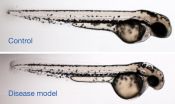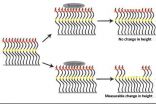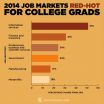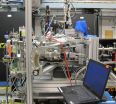(Press-News.org) Hawai'i's sea turtles are afflicted with chronic and often lethal tumors caused by consuming non-native algae "superweeds" along coastlines where nutrient pollution is unchecked. The disease that causes these tumors is considered the leading cause of death in endangered green sea turtles. The new research was just published in the scientific journal PeerJ.
Turtles that graze on blooms of invasive seaweeds end up with a diet that is rich in a particular amino acid, arginine, which promotes the virus that creates the tumors. Scientists at the University of Hawai'i at Mānoa and their NOAA colleague estimate that adult turtles foraging at high-nutrient grazing sites increase their arginine intake 17–26 g daily, up to 14 times the background level.
"For years, local ocean lovers have known that our green turtles have had awful tumors on their heads, eyes and front flippers," said UH Mānoa Marine Biology Professor Celia Smith, who worked with Kyle S. Van Houton of NOAA's Turtle Research Program on this study. "Many hypotheses were offered to explain the tumors, but we kept coming back to the observation that urban reefs—those near dense populations—are the sites with greater numbers of sick turtles. We had no mechanism for this disease."
More than 60 percent of turtles in Kāne'ohe Bay have been observed to bear tumors. Kihei, Maui, has been called a "ground zero" for fibropapillomatosis, the disease that is caused by a herpes virus and manifests as tumors in turtles. Humans appear unaffected by the disease.
Van Houtan and colleagues previously described an epidemiological link between tumors and coastal eutrophication, that is, the enrichment of coastal waters with nutrients from land-based sources of pollution such as wastewater or agricultural fertilizers. This new study analyzed the actual tissues from tumored green turtles and the amounts of arginine in the dominant algae forage species from across Hawai'i.
The analysis revealed remarkably high levels of arginine in tissues of invasive seaweeds harvested under nutrient-rich conditions, such as those affected by nitrogen from land-based pollution. These are the same conditions that promote algal blooms. The non-native algae "superweeds" grow so quickly when fertilized that some can double their weight in a period of two days.
When found on typical healthy reefs with low nutrient inputs, the same invasive algae species had lower levels of amino acids, even though arginine levels were still elevated. A native algae species and favorite food of the green sea turtle called Pterocladiella capillacea did not synthesize anomalously high levels of arginine under low nitrogen conditions.
"I've never had a research project where so many different tools have been used to evaluate a hypothesis and, in every case, the same complex answer is returned: excess nutrients in coastal waters drive blooms of specific invasive algae," Smith said. "These weeds then grow rapidly, dominate shallow water ecosystems, and store high levels of arginine in their tissues that trigger tumor growth for the grazing turtle population. Few could have imagined that an algal bloom could have such consequences up the food chain."
Smith and her colleagues, including UH Mānoa's Meghan L. Dailer and Migiwa S. Kawachi, note that eutrophication of coastal waters goes beyond its influence on green turtle populations. Eutrophication is also associated with coral reef declines.
"The native species we have as our limu, fish and corals evolved for millions of years in low nutrient environments," Smith said. "Any added nitrogen that enters our tropical coasts begins to alter the fundamental competition among species. With too much nutrient input, as we have seen on Maui, new dynamics of fast growth by non-native superweeds occurs. These weeds take over our reefs, and we tend to lose our native species."
The biggest losers might be the gentle sea turtles, who are not looking beyond their next algae snack.
"The honu, or green turtles, have a special status in Hawai'i—culturally and federally," Smith said. "But to prevent them from consuming superweeds that promote these tumors—their greatest known source of mortality, we need to manage aggressively all land-based sources nutrient pollution and to restore the turtle's native diet."
INFORMATION:
FUNDING:
This research was supported in part by a grant from Disney's Worldwide Conservation Fund and NOAA Fisheries, Marine Turtle Assessment Program.
CITATION:
Van Houtan KS, Smith CM, Dailer ML, Kawachi M. (2014) Eutrophication and the dietary promotion of sea turtle tumors. PeerJ 2:e602
http://dx.doi.org/10.7717/peerj.602
Turtle tumors linked to excessive nitrogen from land-based pollution
Invasive algae consumption promotes lethal disease, UH Manoa researchers discover
2014-10-14
ELSE PRESS RELEASES FROM THIS DATE:
QUT study helps outdoor workers reduce their skin cancer risk
2014-10-14
Skin cancer is one of the biggest fears for one in two outdoor workers and when the boss and staff work together the sun safe message gets through, a QUT study has found.
The study, which found more than 50 per cent of outdoor workers rated UV radiation exposure at work as one of their biggest concerns, also identified how a workplace intervention could improve workers' behaviours and attitudes towards sun protection to reduce their risk of skin cancer.
QUT in collaboration with Cancer Council Queensland and Curtin University worked with 14 Queensland outdoor workplaces ...
Mediterranean diet, olive oil and nuts can help reverse metabolic syndrome
2014-10-14
For people with metabolic syndrome, a Mediterranean diet supplemented with extra-virgin olive oil or nuts may help reverse the condition, indicate findings from a clinical trial published in CMAJ (Canadian Medical Association Journal).
About 25% of adults around the world have metabolic syndrome. The syndrome exists in the presence of three or more factors such as large waist circumference, high blood pressure, low HDL-cholesterol, high levels of triglycerides and high blood sugar concentrations that can increase the risk of diabetes, heart disease and death.
Spanish ...
For one family, zebrafish help provide genetic answers
2014-10-14
Research in zebrafish has helped identify the cause of an unknown genetic disorder affecting a boy and two of his uncles, scientists report in an article published October 14 in the journal Genetics.
The findings demonstrate the growing importance of zebrafish as laboratory models of rare diseases. Such models allow geneticists to make sense of the deluge of candidate disease genes being uncovered by advances in sequencing technologies. Although rare diseases are uncommon individually, together they affect as many as 25 million people in the United States.
The project ...
Side effects of cancer prevention surgery can be helped with education program
2014-10-14
BOSTON –– More women are having ovary-removing surgery as a cancer prevention measure, but many are often unaware of sexual or psychological side effects of the procedure. A new study by researchers at Dana-Farber Cancer Institute shows a half-day educational program can help successfully deal with these issues by educating women on how to address them.
The program taught women how to manage some of the physical and emotional difficulties that can follow ovary-removing surgery and helped many participants resume satisfying sexual activity and reduce feelings ...
Scientists create new protein-based material with some nerve
2014-10-14
Berkeley — Scientists at the University of California, Berkeley, have taken proteins from nerve cells and used them to create a "smart" material that is extremely sensitive to its environment. This marriage of materials science and biology could give birth to a flexible, sensitive coating that is easy and cheap to manufacture in large quantities.
The work, to be published Tuesday, Oct. 14, in the journal Nature Communications, could lead to new types of biological sensors, flow valves and controlled drug release systems, the researchers said. Biomedical applications ...
Feeling guilty or ashamed? Think about your emotions before you shop
2014-10-14
Suppose you grabbed a few cookies before heading out to the grocery store and start to feel guilty or ashamed about breaking your diet. According to a new study in the Journal of Consumer Research, feeling guilty might find you comparing calories in different cartons of ice cream. Feeling ashamed might keep you from buying any ice cream in the first place.
"We examined the emotions of guilt and shame and found that when consumers feel guilty, they tend to focus on concrete details at the expense of the bigger picture. On the other hand, when consumers feel ashamed, they ...
Marketing an innovative new product? An exciting product launch could hurt sales
2014-10-14
Should every successful product launch involve some sort of dazzling spectacle? A new study in the Journal of Consumer Research tells us that this might be a great way to market an upgrade, but a flashy launch could backfire if a new product is truly innovative.
"The accepted wisdom is that consumers get excited about new and unique products they cannot immediately understand. However, these feelings of excitement can quickly change to tension and anxiety if we can't ultimately make sense of what a product does, especially if we are in a stimulating retail environment," ...
Jobs plentiful for college grads
2014-10-14
EAST LANSING, Mich. — The job market for new college graduates is red hot.
After several years of modest growth, hiring is expected to jump a whopping 16 percent for newly minted degree-holders in 2014-15, according to key findings from Recruiting Trends. The annual survey, by Michigan State University economist Phil Gardner, is the nation's largest with nearly 5,700 companies responding.
"Employers are recruiting new college graduates at levels not seen since the dot-com frenzy of 1999-2000," said Gardner, director of MSU's Collegiate Employment Research Institute. ...
New light on the 'split peak' of alcohols
2014-10-14
WASHINGTON D.C., October 14, 2014 -- For scientists probing the electronic structure of materials using a relatively new technique called resonant inelastic soft X-ray scattering (RIXS) in the last few years, a persistent question has been how to account for "split peak" spectra seen in some hydrogen-bonded materials.
In RIXS, low-energy X-rays from synchrotron or X-ray free-electron laser light sources scatter off molecules within the studied material. If those molecules include light elements, such as the -OH group in alcohols, the complex spectra RIXS produces are ...
Protein found in insect blood that helps power pests' immune responses
2014-10-14
MANHATTAN, Kansas — Pest insects may be sickened to learn to that researchers at Kansas State University have discovered a genetic mechanism that helps compromise their immune system.
Michael Kanost, university distinguished professor of biochemistry and molecular biophysics, led a study by Kansas State University researchers that looked at how protein molecules in the blood of insects function in insects' immune system. Insects use proteins that bind to the surface of pathogens to detect infections in their body.
"For example, when a mosquito transmits a pathogen ...
LAST 30 PRESS RELEASES:
Scientists discover ‘platypus galaxies’ in the early universe
Seeing thyroid cancer in a new light: when AI meets label-free imaging in the operating room
Neutrophil-to-lymphocyte ratio may aid risk stratification in depressive disorder
2026 Seismological Society of America Annual Meeting
AI-powered ECG analysis offers promising path for early detection of chronic obstructive pulmonary disease, says Mount Sinai researchers
GIMM uncovers flaws in lab-grown heart cells and paves the way for improved treatments
Cracking the evolutionary code of sleep
Medications could help the aging brain cope with surgery, memory impairment
Back pain linked to worse sleep years later in men over 65, according to study
CDC urges ‘shared decision-making’ on some childhood vaccines; many unclear about what that means
New research finds that an ‘equal treatment’ approach to economic opportunity advertising can backfire
Researchers create shape-shifting, self-navigating microparticles
Science army mobilizes to map US soil microbiome
Researchers develop new tools to turn grain crops into biosensors
Do supervised consumption sites bring increased crime? Study suggests that’s a myth
New mass spec innovation could transform research
Maternal nativity, race, and ethnicity and infant mortality in the US
Migration-related trauma among asylum seekers exposed to the migrant protection protocols
Jupiter’s moon Europa has a seafloor that may be quiet and lifeless
SwRI upgrades nuclear magnetic resonance laboratory for pharmaceutical R&D
House sparrows in northern Norway can help us save other endangered animals
Crohn's & Colitis Foundation survey reveals more than 1/3 of young adults with IBD face step therapy insurance barriers
Tethered UAV autonomous knotting on environmental structures for transport
Decentralized social media platforms unlock authentic consumer feedback
American Pediatric Society announces Vanderbilt University School of Medicine as host institution for APS Howland Visiting Professor Program
Scientists discover first method to safely back up quantum information
A role for orange pigments in birds and human redheads
Pathways to net-zero greenhouse gas emissions for Southeast Asia
A JBNU–KIMS collaborative study on a cost-effective alloy matches superalloys for power plants and energy infrastructure
New study overturns long-held model of how plants coordinate immune responses.
[Press-News.org] Turtle tumors linked to excessive nitrogen from land-based pollutionInvasive algae consumption promotes lethal disease, UH Manoa researchers discover




